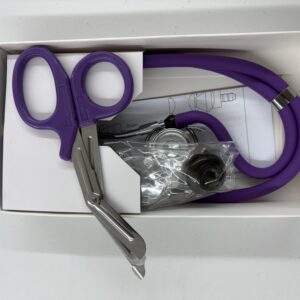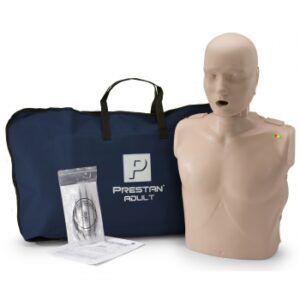Description
Automatic blood pressure cuffs are devices that automatically inflate and deflate a cuff placed around the upper arm or wrist to measure blood pressure and pulse rate. They are a popular choice for home blood pressure monitoring due to their ease of use and ability to store readings for tracking trends over time.
How they work
Automatic blood pressure cuffs use the oscillometric method to measure blood pressure. This involves:
- Inflation: An air pump inflates the cuff to occlude the brachial artery, stopping blood flow.
- Deflation: The pressure in the cuff is gradually released.
- Oscillations: As the cuff pressure drops below systolic pressure, blood begins to flow through the artery, creating detectable vibrations (oscillations) in the arterial wall.
- Measurement: A sensor detects these vibrations and the monitor calculates the systolic and diastolic pressures based on the strength and pattern of the oscillations. The cuff pressure at which the oscillations are at their maximum corresponds to the mean arterial pressure (MAP).
Key features to consider
- Cuff size: Ensure the cuff fits properly to avoid inaccurate readings. Measure the circumference of the upper arm and choose a monitor with a compatible cuff size.
- Accuracy: Prioritize models with clinical validation or FDA clearance. The American Heart Association (AHA) recommends upper arm monitors as the most accurate type.
- Ease of Use: Look for one-button operation, large displays, and clear instructions.
- Data Storage: Monitors with memory functions allow tracking of readings over time and some offer multiple user profiles.
- Connectivity (Optional): Some models connect to smartphone apps via Bluetooth for data tracking, analysis, and sharing with healthcare providers.
- Other features: Consider features like backlit displays, irregular heartbeat detection, risk category indicators, and data averaging.
Benefits of home monitoring
- Tracking Trends: Observe blood pressure changes over time, not just during doctor visits.
- Medication Management: Helps doctors assess the effectiveness of treatment plans.
- Early Detection: Identify potential issues like hypertension early.
- “White Coat” and “Masked” Hypertension Detection: Identify instances where readings differ in clinic vs. home settings.
- Improved Treatment Adherence: Seeing the impact of lifestyle changes can encourage patients to stick to their treatment plans.







Reviews
There are no reviews yet.